- The Shift to Direct-to-Consumer in MENA
- D2C Is Gaining Momentum—Fast
- Why D2C Matters for FMCG Brands
- Regional D2C Challenges and Opportunities
- Essential Features of FMCG Brand Sites
- Must-Have Capabilities
- Enhancing Brand Utility and Loyalty
- SEO and Content Strategy Integration
- Why Speed, UX, and Localization Matter
- MENA User Behavior Snapshot
- The Cost of Poor UX
- Localization Is More Than Language
- FMCG App Success Stories in MENA
- Carrefour UAE (MAF)
- Lamana’s Approach to Web & App Builds
- Strategy Before Code
- Our FMCG-Focused UX & UI Design Process
- Tech Stack and Integration Capabilities
- Post-Launch Optimization
- First-Party Data = Smarter Decisions
- Cost Savings vs. Retailer Commissions
- Long-Term Brand Loyalty
- Be on the Shelf and in Their Pocket
In the Middle East, the way people shop has changed in the blink of an eye. It is no longer about walking down the aisles of a supermarket; consumers expect to find their favorite FMCG brands right on their phones, whenever they need them.
Whether it is through a mobile phone app or a smart website, being digitally present is now a must, not a nice-to-have. If your brand isn’t visible online and easy to access, you are likely losing customers to faster, more innovative competitors.
This article explains why having a custom app and an optimized website is essential for FMCG brands in the MENA region. It is about more than going digital; it is about building stronger relationships, collecting valuable customer data, and staying relevant in a world where convenience is important.
The Shift to Direct-to-Consumer in MENA
The shift to Direct-to-Consumer (D2C) in MENA is gaining momentum as brands seek closer connections with customers and greater control over sales. Markets face logistical challenges, such as inconsistent address systems and reliance on cash-on-delivery, but innovations like hyper-local dark stores are transforming delivery speed and efficiency. With quick-commerce in the GCC valued at $2.1 billion in 2024 and projected to reach $22.6 billion by 2033, the region’s D2C growth is being fueled by rising urban demand, digital adaptation, and consumer appetite for faster, more convenient shopping experiences.
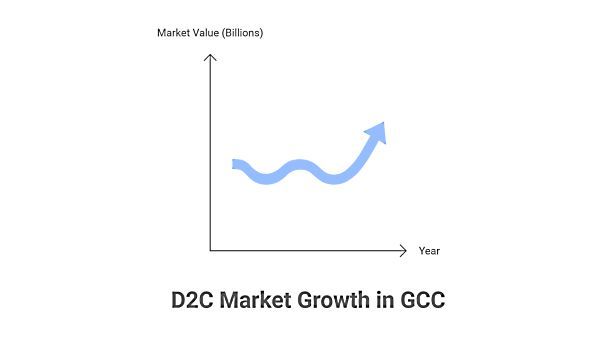
D2C Is Gaining Momentum—Fast
The e-commerce market in the Middle East and North Africa is expanding quickly. According to DigitalCommerce360, the market was worth $34.5 billion in 2024, up 13% from the year before, and is expected to double to $57.8 billion by 2029. The UAE and Saudi Arabia are leading the charge, with the UAE’s market growing around 9.4% annually, from $8.8 billion by 2029.
FMCG is one of the fastest-growing segments online. KaneberidgeNews reports FMCG e-commerce sales jumped 46% in Saudi Arabia and 29% in the UAE in just one year. Even Egypt, traditionally an offline market, is making the shift. Consultancy-ME highlights that the share of Egyptians shopping online daily has tripled from 4% in 2020 to 15% in 2025.
A big part of this boom comes from the region’s young, tech-savvy population. Medium and Checkout point out that out of 700 million people in MENA, about 450 million are under 30, with over half under 25. Smartphone penetration is also high: 66% in the UAE and 62% in Saudi Arabia, while social media usage reaches about 99% and 75% respectively.
This demographic prefers direct, app-based engagement with brands, from subscription boxes to loyalty programs. As BCC Research notes, for MENA’s youth, convenience, mobile-first shopping, and direct brand relationships are the norm, making direct-to-consumer channels a natural fit.
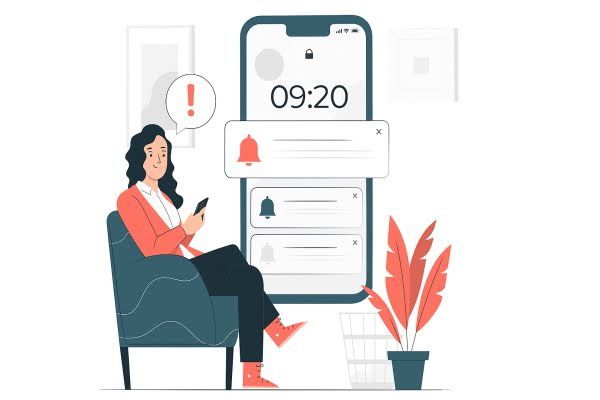
Why D2C Matters for FMCG Brands
Selling directly to consumers gives FMCG brands complete control over how their products are presented. D2C strategies allow brands to own the entire customer experience, which avoids the dilution that happens when their products are placed alongside hundreds of others on crowded retail shelves.
This means packaging, messaging, and offers don’t get lost in the noise. It also enables deeper digital connections, helping brands build identity and loyalty at minimal cost.
- First-party data and insights: A direct sales channel means that the brand owns valuable customer data. Unlike selling through intermediaries, D2C lets FMCG companies collect first-party data, from purchase history to browsing behavior, which creates endless possibilities for personalization. Salesforce reports that 99% of consumer goods leaders now prioritize D2C for this very reason: it provides the infrastructure to capture data that shapes product development and marketing. First-party data offers a single, unified customer view, enabling brands to tailor everything from product mixes to promotions based on individual preferences.
- Direct communication channels: Owned mobile apps and websites open the door to powerful marketing tools. For example, push notifications can drive engagement and repeat orders, and industry sources like Bryj highlight that promotions are described as a potent method for sustaining customer interest. Similarly, integrated loyalty programs and CRM-driven email/SMS flows let brands maintain one-to-one relationships, sending segmented offers or in-app rewards directly without relying on retailers or third-party ads.
- Case example-Custom app and website: Many FMCG brands in MENA are moving in this direction. For instance, Alokozay, a UAE-based tea and snacks company, launched a custom e-commerce app and website with modern features and ERP integration. The platform analyzes each user’s preferences and purchase history to automatically highlight relevant products and personalized deals, significantly boosting repeat orders.
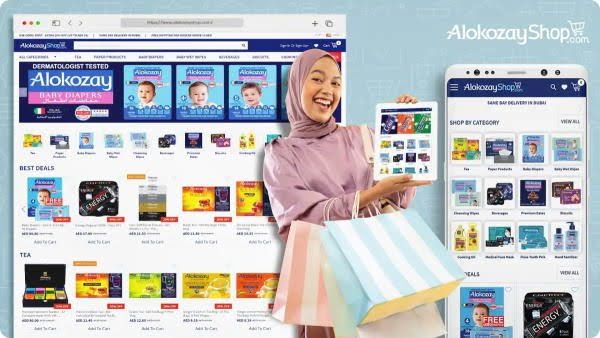
Regional D2C Challenges and Opportunities
Regional D2C in MENA faces challenges such as inconsistent address systems and reliance on cash-on-delivery, which complicate. At the same time, opportunities are emerging through hyper-local dark stores that enable rapid delivery and support the growth of quick commerce, driven by rising demand for speed, convenience, and better customer experiences.
Logistics and Infrastructure limitations: Some MENA markets still struggle with delivery logistics. Irregular address systems and the heavy use of cash-on-delivery make last-mile delivery more complicated in parts of the region. Brands moving into direct-to-consumer (D2C) need to plan for these issues, such as verifying addresses in advance or offering convenient pick-up points.
Hyper-local fulfillment: As noted by IMARC Group and YouRetailCoach, retailers across MENA are setting up dark stores, small, local warehouses in urban centers to speed up delivery for FMCG and grocery products. These micro-fulfillment hubs make 1-2 hour delivery possible and are fueling the explosive growth of quick commerce. In the GCC alone, the quick-commerce market was valued at $2.1 billion in 2024 and is projected to reach $22.6 billion by 2033 (around 30% CAGR). Analysts credit hyper-local fulfillment channels as a key driver behind the surge in online grocery sales in the region.
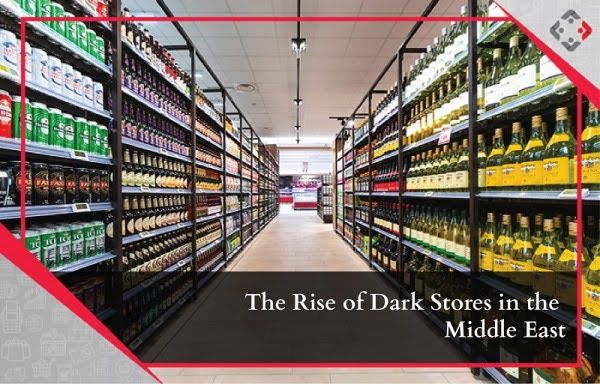
- Loyalty and personalization programs: Direct-to-consumer channels open up new opportunities for building customer loyalty. FMCG brands can launch their own digital rewards apps to strengthen relationships and, as OpenLoyalty notes, “take control of their customer relationships” while gaining access to the same data that native D2C brands benefit from. A great example is P&G Pampers, which wasn’t originally a D2C brand. They introduced the Pampers Club app, allowing parents to earn points with every purchase by scanning diaper pack codes and redeeming rewards. At the same time, Pampers gains valuable insights into customer needs and keeps parents engaged. In the MENA region, similar loyalty initiatives, often app-based, are on the rise, as brands look to recreate the personal touch retailers once provided.
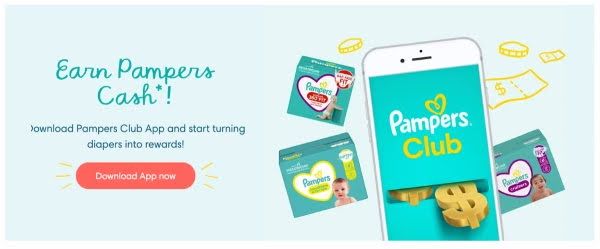
- Data-driven personal experiences: Modern technology now makes it possible to deliver deep personalization at scale. Advanced loyalty platforms can use AI and analytics to offer content that truly resonates with each individual. Some brands, for example, scan previous purchases, or even the contents of a customer’s fridge, to recommend products, like Hellmann’s recipe recommendation in the US. Others integrate brand values into loyalty programs, such as Nestlé’s Collect program, which rewards customers for recycling packaging, creating both an emotional connection and valuable data insights.
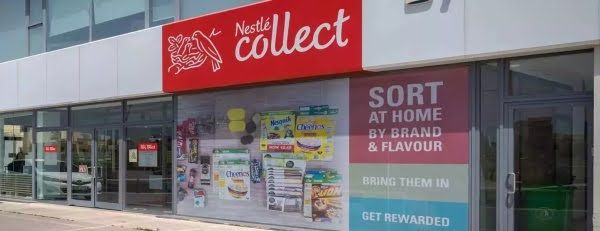
Essential Features of FMCG Brand Sites
FMCG websites in the UAE need to be easy to use and full of helpful information to boost discovery and loyalty. Main features include advanced search, support for multiple languages (especially Arabic and English in MENA), and real-time stock or store locators. They should also link smoothly with major retailers like Amazon and Carrefour for easy shopping.
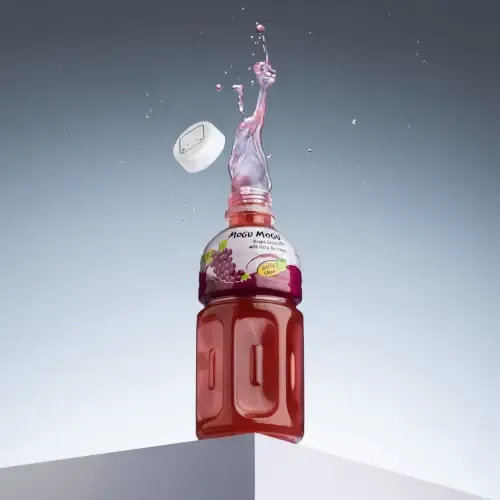
Lamana agency built a creator-led funnel for Mogu Mogu that deliberately lands on a bilingual, utility-first page answering two real shopper questions up front: which flavor should I try? and how do I verify authenticity? The campaign’s click-through formats (pre-roll + banners) were engineered to drive qualified, intent-rich sessions to that page rather than scatter traffic, showing how smart sites and campaigns reinforce each other in MENA’s environment
Good sites go beyond basics by offering engaging content like blogs, recipes, and customer reviews, plus services such as subscriptions and reminders to keep customers coming back.
Strong SEO is essential too, using structured data, mobile optimization, and country-specific landing pages (for KSA, UAE, and Egypt) to match local search habits.
Must-Have Capabilities
FMCG sites need to help customers find products fast and easily. Main features are:
- Smart search and filters: A strong search with autocomplete and typo correction helps shoppers browse big catalogs. Filters narrow choices by brand, size, etc., showing the most relevant products. Too many options can be overwhelming, but filters speed up finding the right item.
- Multi-language support: In Saudi Arabia, UAE, and Egypt, sites must offer both Arabic and English. Arabic content builds trust and respect for local culture, boosting engagement and sales.
- Location-based stock and store finder: Showing where products are available, online or in stores, helps customers avoid frustration and speeds up purchases by displaying only locations with stock.
- Retailer and E-commerce integration: Brands can make it easier for customers to buy their products by linking to well-known and trusted retailers like Amazon or Carrefour. Working together with local online stores and blending both in-store and online shopping options helps brands reach more people and keep their products readily available.
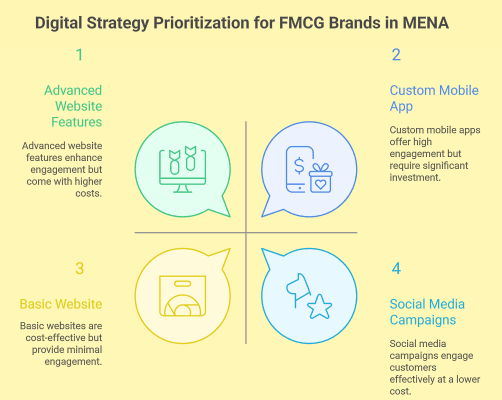
Enhancing Brand Utility and Loyalty
For FMCG brands, simply sharing product details isn’t enough. They need to add real value and keep customers engaged.
Blog or Recipe Hubs: Providing recipes and how-to guides gives customers useful ideas and reasons to return. For example, “Heinz To Home” recipe hub taps into the home cooking trend. About 61% of FMCG brands use recipe content in marketing, as CreativeBrief noted.
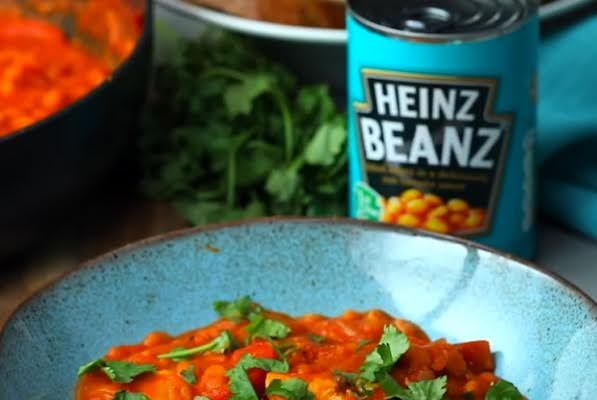
- Customer Reviews and FAQs: Customer reviews and Q&A sections help build trust and make it easier for people to find your brand online. WriteSonic points out that getting local customers to share their feedback can really boost how visible and credible you appear. Having clear FAQs also answers common questions and helps shoppers feel more confident when making a purchase.
- Sustainability and Brand Values: When brands show they care about the planet, such as using eco-friendly packaging, recycling, or supporting local community projects,it really makes them shine. People notice those good vibes and are more likely to stick around and root for a brand that shares their values.
- Subscriptions and Replenishment Reminders: Subscription services and reminders increase repeat purchases. For instance, Cross-digital states that a pet food brand improved loyalty by allowing users to pause shipments. Email or SMS reminders also lift repeat rates.
SEO and Content Strategy Integration
App development for FMCG brands in the Middle East and website optimization are key to reaching and engaging consumers effectively. When it comes to FMCG websites in the UAE, it is essential to focus on both technical SEO and localized content to stand out in a competitive market.
- Structured Data (Product Schema): Each product page should include schema markup, so search engines can easily identify key details like product name, price, availability, star ratings, and review counts. According to WriteSonic, this helps earn rich snippets on Google, showing important product information like price and ratings right in search results, which boosts click-through rates.
- Mobile-First Optimization: Since most FMCG searches happen on smartphones, pages need to load quickly, ideally under 3 seconds, and display vital information without scrolling. The article also highlights that it is immediately visible. Mobile-friendly designs with large buttons and optimized images are crucial for a smooth shopping experience on the go.
- Region-Specific Landing Pages: Tailoring content for each country improves relevance and SEO. Brands often create separate landing pages or websites for KSA, UAE, and Egypt, with language, promotions, and retailer information customized for each market. These three countries represent about 80% of Middle East e-commerce. Using geo-targeted pages, such as Google.sa vs Google.ae, and local keywords helps brands connect better with cultural preferences. For example, ChannelEngine says that KSA pages might focus on Arabic content and local testimonials, while UAE pages highlight retailers in Dubai or Abu Dhabi, improving local search visibility.
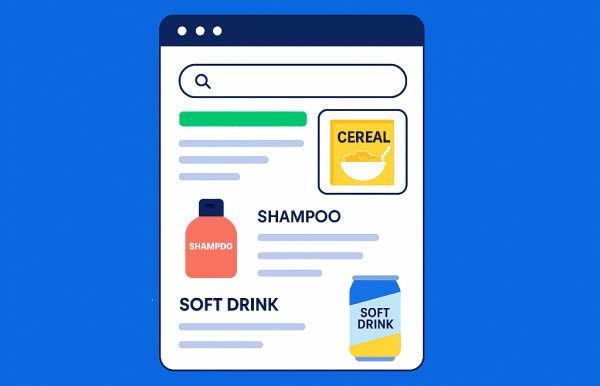
Why Speed, UX, and Localization Matter
In the journey of app development for FMCG brands in the Middle East and the broader FMCG digital transformation across MENA, speed, user experience, and localization are critical. Fast loading times help users get what they need quickly and keep them satisfied.
A great user experience means your app feels smooth, simple, and just plain easy for everyone to use. When you localize by adapting the content, design, and language to fit the local culture and what people really need, it makes users feel like the app was made just for them. Combine these two, and you have a winning formula that is absolutely essential to crush it in the Middle East’s digital scene.
MENA User Behavior Snapshot
The MENA region is overwhelmingly mobile-first, with the UAE leading the way. According to YeasitTech, its e-commerce market is booming, forecast to hit nearly $48 billion by 2025, and over 80% of online purchases there are made via smartphones. Carrefour’s UAE grocery app is a prime example; by streamlining its mobile user experience, it saw online sales climb by around 30% after streamlining its mobile UX.
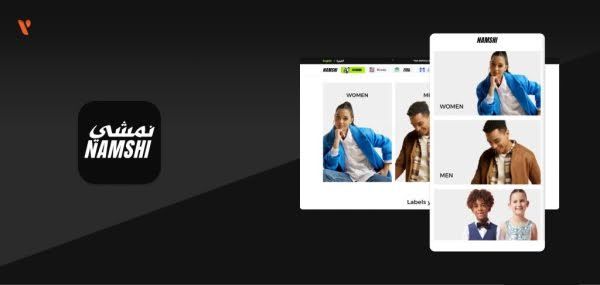
Another example is Talabat, a leading food delivery platform in the Middle East and the UAE. It has used its user-friendly mobile app to simplify ordering and boost convenience. With features like real-time order tracking and an extensive menu through partnerships with local restaurants, the app has earned millions of downloads and strong customer trust. The same article reveals that this approach has fueled annual growth of over 50%.
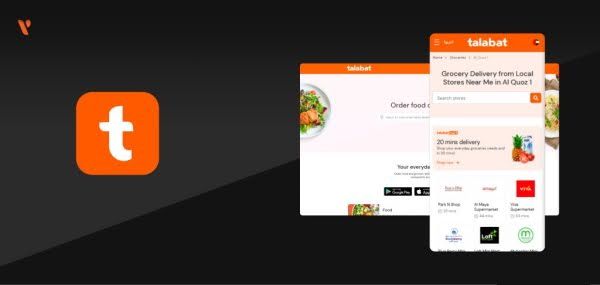
Language flexibility matters as well. With many shoppers switching between Arabic and English, major marketplaces like Noon and Amazon offer bilingual interfaces. UX guidelines from Blue emphasize support for right-to-left Arabic layouts, culturally relevant visuals, and simplified, icon-driven navigation. Clean, uncluttered designs help impatient users find products quickly and check out with ease.
The Cost of Poor UX
Slow-loading pages can seriously hurt sales. Every second matters. WeMakeWebsites shows that even a one-second delay can reduce conversions by about 7%, and 40% of users might leave if a page takes more than three seconds to load. In MENA’s mobile-first markets, that loss is even more damaging.
For example, UAE nutrition retailer Sporter.com boosted its page by 33% simply by optimizing images, which led to a 34% increase in revenue. A slow site, on the other hand, literally drives customers away.
Consistency is equally critical for building trust. As UX experts note on UXMag, inconsistent or disjointed interfaces make a product feel unreliable and unprofessional, quickly eroding user confidence. This is particularly important in MENA, where trust can be fragile. One survey by LiveSalesman found that about 85% of the Middle East online shoppers prefer cash-on-delivery, which is a sign of hesitation toward digital platforms. When UX is done right, it pays off in loyalty. For example, UAE fashion app Namshi simplified its interface and saw engagement rise by around 25%, as mentioned by YeastTech.

Localization Is More Than Language
Successful localization in MENA goes beyond simply translating text. It includes culturally relevant design, familiar payment options like cash, delivery, and local wallets, and timely promotions tied to regional holidays such as Eid and National Day.
- Cultural design: Layouts should match local reading patterns (right-to-left for Arabic) and use visuals that reflect regional values. Avoid offensive symbols. Instead, use resonant colors or icons, like green for Islam. Many apps add traditional motifs to feel familiar to users.
- Payments and trust: Alongside credit cards, cash-on-delivery and local wallets are common (STC Pay, Tamara, Tabby). Apps like Careem boosted sales by adding Tabby’s “buy now, pay later” option.
- Local holidays: Sales peak during Ramadan, Eid, and National Day. Platforms plan special campaigns. According to KhaleejTimes, Eid al-Adha 2025 is expected to drive 45% growth, while National Day deal searches rose 65% last year.
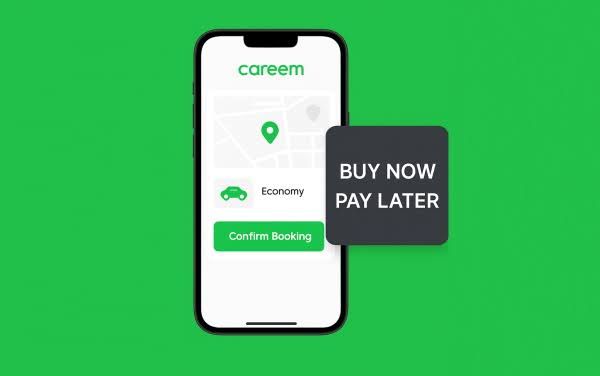
FMCG App Success Stories in MENA
In recent years, mobile applications have played a vital role in transforming the FMCG industry in the Middle East and MENA. These apps have simplified and accelerated the shopping experience through innovative services.
In this section, we will explain several successful examples of major FMCG brands that have increased customer satisfaction and strengthened their position in the competitive regional market by using advanced technologies and improving their apps constantly.
Carrefour UAE (MAF)
According to a report from Majid Al Futtaim, in late 2024 Carrefour UAE introduced a pioneering 24/7 express delivery service via its mobile app. This service lets customers place orders at any time, day or nigh, with over 10,000 products delivered in under 60 minutes. The service responds to increasing demand during late-night and early-morning hours, catering to consumers’ need for convenience outside typical shopping times. For example, a customer can order groceries at midnight and have them delivered before 1 AM, supporting lifestyles with irregular schedules. This express delivery not only enhances customer satisfaction but also strengthens Carrefour’s competitive edge in the rapidly evolving FMCG market in the UAE. The seamless app experience combined with speedy fulfillment illustrates how digital transformation is reshaping retail, meeting consumer expectations for instant gratification and convenience.
During the 2020-2021 pandemic, Carrefour UAE saw a 50% surge in online orders as customers shifted to contactless shopping. To keep up with this surge, Majid Al Futtaim launched new fulfillment centers using robotics and AI-powered logistics. These Technologies cut order processing times by half and improved accuracy, reducing errors like wrong or missing items. Automated systems also optimized inventory, ensuring popular products stayed in stock. This digital transformation helped Carrefour maintain high customer satisfaction despite the demand spike and set a new benchmark for FMCG retail in the Middle East. The move positioned Carrefour for continued success in the evolving online grocery market.
In 2021, Majid Al Futtaim introduced Carrefour City+ as the Middle East’s first checkout-free shopping experience. Using the City+ app, customers can enter the store, pick up the items they need, and leave without standing in line. Smart sensors and artificial intelligence track all purchases and automatically deduct the payment from the customer’s account.
This innovation removes the inconvenience of checkout, saving time and enhancing convenience for busy shoppers. For example, commuters can quickly grab essential items without any delay. By blending digital and physical shopping, Carrefour City+ shows how FMCG brands are using technology to meet consumers’ changing needs. The concept highlights Majid Al Futtaim’s leadership in retail innovation in the region.
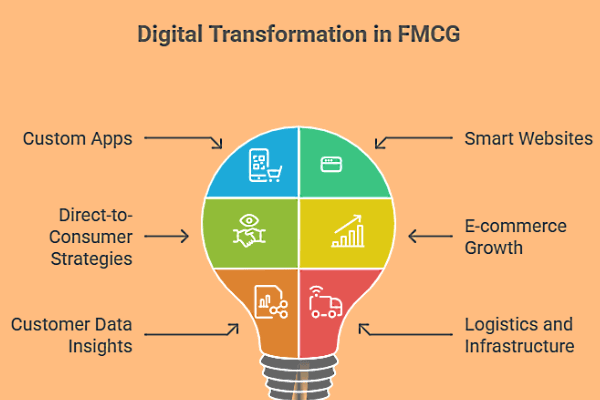
Lulu Hypermarket (GCC-wide)
Lulu Hypermarket, serving GCC countries, faced some challenges at first with their app, things like slow updates to the shopping cart and inaccurate address detection were frustrating customers. But in 2025, Lulu gave their app a major makeover to make it faster, more reliable, and smarter at finding delivery locations.
Shoppers quickly noticed the difference, enjoying easier navigation and a much quicker checkout experience. Thanks to these improvements, Lulu’s app climbed the ranks to become one of the top shopping apps in the Gulf.
This successful app relaunch really shows how much Lulu listens to its customers and stays ahead in the competitive FMCG market across the Middle East.
Lamana’s Approach to Web & App Builds
Having a strong online presence is no longer a choice For FMCG brands in the Middle East; it is a necessity. It’s the key to building customer loyalty, driving direct sales, and keeping control of valuable data. Lamana Agency, a creative-first digital agency, takes a tailored approach to web and app development for FMCG brands in the Middle East that is designed for the unique needs of this fast-changing market.
Strategy Before Code
At the heart of Lamana’s work is their belief in Strategy Before Code. They stress that every digital platform should be fast, easy-to-use, mobile-friendly, and built with Middle Eastern users in mind.
This means understanding the local market, studying how people interact online, and carefully planning the customer journey, from the first time someone hears about a brand to when they become a loyal repeat buyer. Their goal is to make sure technology serves both the brand and the customer.
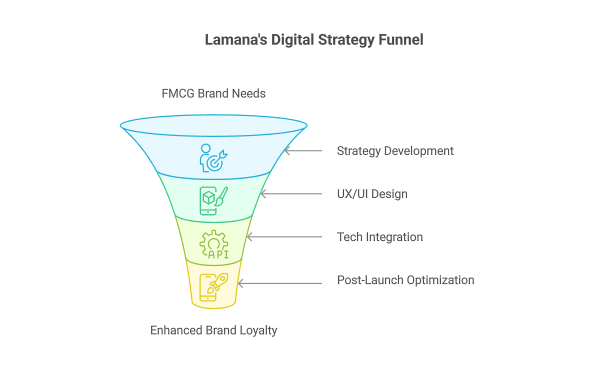
Our FMCG-Focused UX & UI Design Process
Lamana’s FMCG-focused design process blends smooth user experiences with attractive, practical design. This is especially important in the MENA region, where people have little patience for slow-loading websites, a delay of just one second can lower mobile conversions by as much as 20%.
To overcome this, Lamana goes beyond simple translation. They use deep Arabic localization, which includes right-to-left layouts, mirrored designs, and culturally relevant content. This attention to cultural detail builds trust and engages users.
Tech Stack and Integration Capabilities
Lamana’s approach clearly involves a solid tech stack and strong integration skills. Custom apps are a major part of their strategy, helping brands connect directly with customers, control the shopping experience, and gather valuable first-party data. This data is far more cost-effective to use in marketing and can boost repeat purchases by over 80%.
They also apply AI tools to improve supply chains, personalize experiences, and manage data in real time. On top of that, they adapt to different payment preferences, including the still-common Cash on Delivery.

Post-Launch Optimization
Lastly, Lamana agency focuses on what happens after a project goes live. Their optimized growth mindset means they track how people use the site or app, monitor sales results, and analyze performance data. Through ongoing improvements, A/B testing, and regular updates, they help brands stay competitive and relevant in the fast-moving MENA digital world.The ROI of Owning Your Digital Ecosystem
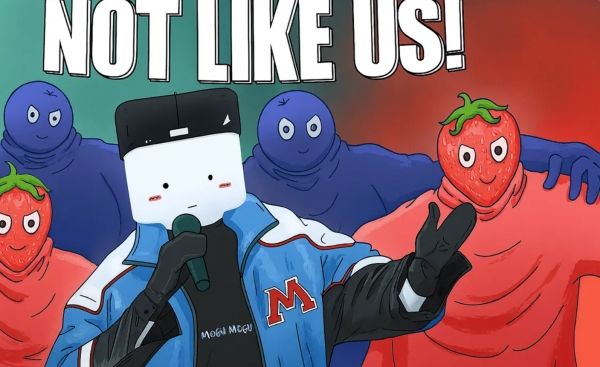
To make your ROI section concrete, cite Lamana’s Q1 refresh for Mogu Mogu, which combined 10 creator posts with a Google/YouTube performance spine. driving 5.45M impressions, 4.5% CTR, 1.9M YouTube views, and 12K site visitors into the brand’s owned ecosystem. It’s the practical D2C pattern your article recommends: creators build credibility; paid video scales efficiently; owned web/app captures data for remarketing, replenishment, and loyalty
Owning your digital ecosystem gives brands a big advantage by providing first-party data for smarter, personalized marketing, reducing costs by cutting out retailer commissions, and enabling long-term customer loyalty through tools like automated CRM, gamified rewards, and push notifications.
Having direct control over your data and communication means you can increase profits, keep customers more engaged, and build relationships that last.
First-Party Data = Smarter Decisions
In the fast-paced world of FMCG app development in the Middle East, the brands that win are the ones that truly own their digital space. It is not just about having an app, it is about building an ecosystem where every click, browse, and purchase happens in your world, not someone else’s. By collecting valuable first-party data straight from your customers, you get a clear, unfiltered view of their habits and preferences with no middlemen and no guesswork. That is the kind of insight that fuels smarter marketing, stronger loyalty, and bigger wins.
Instead of dealing with unknown buyers, you transform them into segmented users with rich purchase histories, allowing for deeper insights and more targeted marketing.
In the D2C FMCG tech Middle East landscape, this data powers personalized offers and automated replenishment triggers. For example, brands can use past purchase data to send customers timely reminders or special discounts, making shopping easier and building loyalty. With predictive analytics, these efforts can go even further by anticipating when a customer is likely to need a replacement, helping to increase both return on investment and overall customer satisfaction.
According to Nector, 96% of consumers prefer to buy from brands that provide relevant, personalized experiences. Finally, applying first-party data through smart app development and tech solutions is the key to making smarter, proactive decisions that drive higher conversions and increase customer lifetime value in the Middle East FMCG market.
Cost Savings vs. Retailer Commissions
One of the biggest advantages of owning your digital channels, such as through app development for FMCG brands in the Middle East, is cutting out retailer commissions. Selling on third-party marketplaces often means losing around 30% of each sale to intermediaries. By selling directly on your own website or app, you keep 100% of the revenue, which significantly improves profit margins on every product sold.
Owning your ecosystem also gives you full control over promotions and product visibility. Unlike third-party sites, where you face restrictions on discounts, bundle offers, and marketing campaigns, your own online store lets you launch any promotion, seasonal sales, BOGO deals, loyalty rewards, whenever and however you want, without sharing costs or asking permission.
Long-Term Brand Loyalty
Building long-term loyalty is easier when brands have direct control over customer communication and can use smart tools to engage and retain shoppers. Owning the following tools helps brands build lasting relationships and maximize customer lifetime value.
- CRM automation: Automate personalized messages based on customer behavior to keep shoppers engaged and improve retention. Even a tiny increase in retention can significantly boost profits.
- Gamified loyalty programs: Add game-like elements (points, badges, challenges) to loyalty programs to increase fun, engagement, and repeat purchases.
- Push-driven retentions: Use timely push notifications via your app or website to remind and re-engage customers with offers and updates.
Be on the Shelf and in Their Pocket
In a region where digital-first habits are growing fast, FMCG brands that invest in apps and smart websites are setting themselves up for long-term success. Those who don’t do this risk being quickly forgotten and falling behind in the market.
Lamana helps FMCG brands across MENA turn their digital goals into easy-to-use, profit-generating platforms, covering everything from store shelves to screens in consumers’ pockets.


